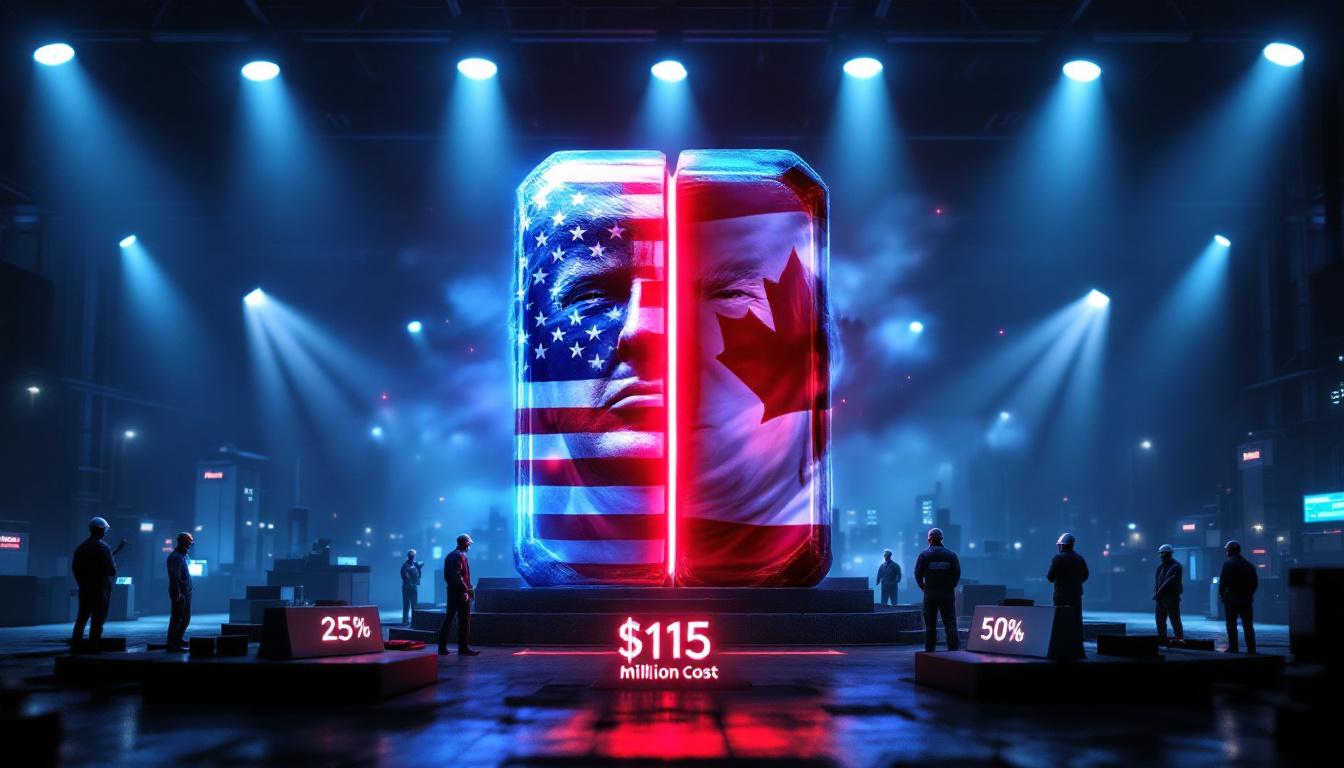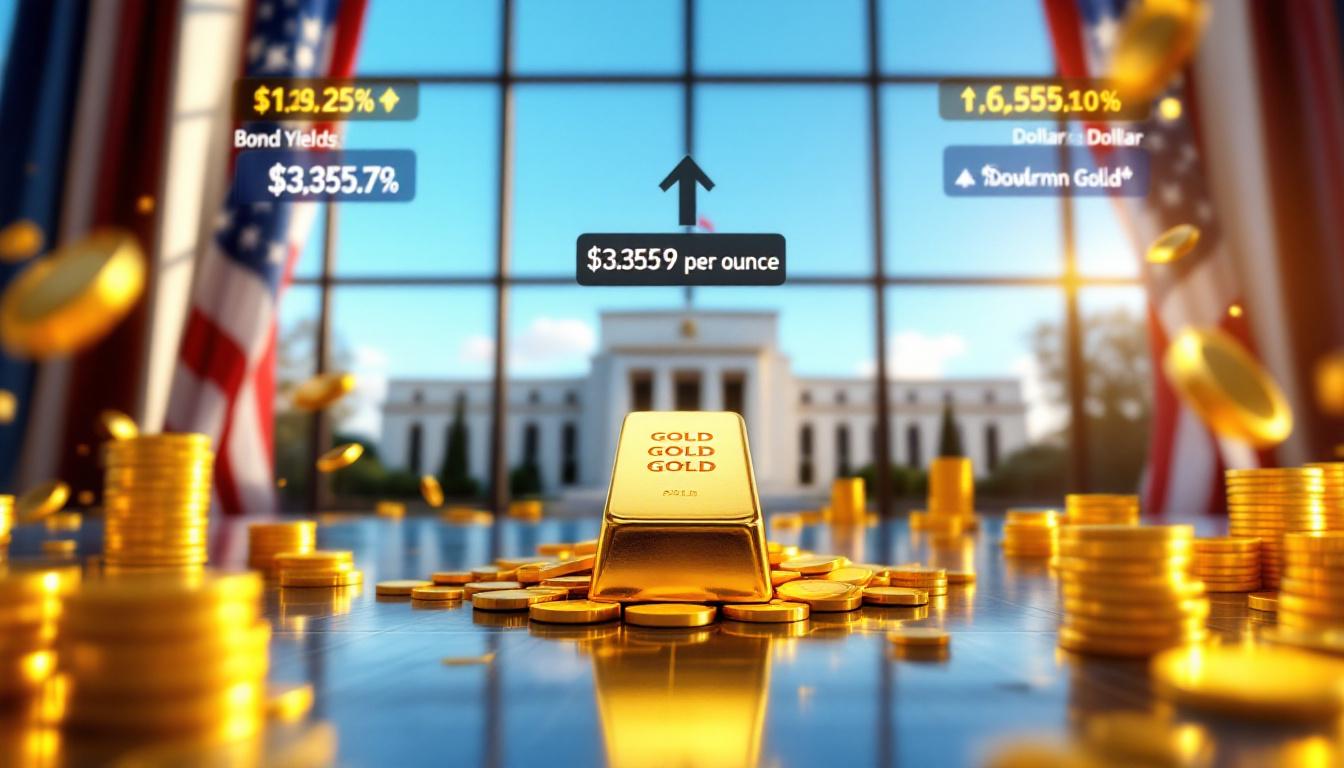Trump's Tariffs and Global Trade Wars: Economic Impact and Market Reactions
The announcement of new tariffs by President Donald Trump on April 2, 2025, marked a significant escalation in global trade policy, triggering immediate market volatility dynamics and raising concerns about long-term economic stability. The tariffs, ranging from 10% to 49% across more than 100 countries, have already resulted in a $6.6 trillion loss in global equity markets within two days, alongside surging commodity prices and predictions of stagflation.
What Are Trump's New Tariffs and How Do They Work?
The Scope and Scale of Trump's 2025 Tariff Announcement
On April 2, 2025, President Trump unveiled a sweeping tariff policy targeting over 100 nations, with rates varying by country. The highest rate of 49% was imposed on Cambodia, while China faced an additional 34% atop existing tariffs, and the European Union received a 20% levy. This policy, termed "Liberation Day" by the Trump administration, represents the most extensive use of import taxes in over a century, aiming to recalibrate trade imbalances.
The UK received a comparatively lower 10% tariff rate, yet economists warn that even this level could significantly disrupt supply chains and bilateral trade relationships that have been established over decades.
Understanding the "Reciprocal Tariffs" Approach
The tariffs were framed as "reciprocal," designed to pressure trading partners into renegotiating terms favorable to U.S. interests. This approach diverges from traditional trade policy, prioritizing bilateral retaliation over multilateral agreements.
By positioning the measures as essential to making "America wealthy again," the administration has escalated tensions with key allies and competitors alike, risking prolonged Donald Trump tariffs and global trade wars and potential countermeasures from affected nations.
How Have Global Markets Responded to Trump's Tariffs?
Immediate Market Impact and Volatility
The tariff announcement triggered a historic liquidation event, erasing $6.6 trillion from global equities in 48 hours. By April 7, 2025, total market capitalization losses since Trump's January inauguration exceeded $11.1 trillion, surpassing declines seen during the 2008 financial crisis.
Trading volumes on April 5 reached an unprecedented 26.4 billion shares, eclipsing the January 2021 peak of 23.7 billion during the meme stock frenzy. This volume—more than double the 2024 average—underscores the panic-driven selloff across major indices worldwide.
Comparison to Previous Market Crashes
Analysts at JP Morgan noted that such severe market crashes have only occurred three times in U.S. history: during the 2008 global financial crisis, the 2020 COVID-19 pandemic, and the current 2025 tariff-induced collapse.
While previous administrations have implemented targeted tariffs, the breadth and depth of the current measures have prompted economists to label April 2, 2025, as "Demolition Day" rather than Trump's preferred "Liberation Day," highlighting the immediate destructive impact on market valuations.
What Are the Economic Implications of the New Trade War?
Potential Inflation and Recession Concerns
The tariffs have reignited fears of stagflation, combining rising consumer prices with stagnant economic growth. Import-dependent industries face immediate cost increases, which are likely to cascade through supply chains to final consumer prices.
Economists warn that the inflationary pressure comes at a particularly vulnerable time, as many economies were already experiencing price instability. The combination of rising costs and declining growth prospects creates a challenging environment for central banks worldwide.
Federal Reserve's Potential Response
JP Morgan predicts the Federal Reserve may implement an emergency rate cut as early as May 2025 to mitigate market turmoil, mirroring interventions during the 2008 and 2020 crises.
Such a move would represent a significant policy shift, as the Fed had previously signaled a commitment to maintaining higher rates to combat persistent inflation. Emergency monetary easing could further destabilize the U.S. dollar while driving capital into safe-haven assets like gold and Treasury bonds.
How Are Commodity Markets Reacting to Trump's Tariffs?
Gold and Precious Metals Performance
Gold prices surged by $90 on April 7, 2025, rebounding from a brief pullback, as investors sought stability amid equity volatility. This movement exemplifies gold market trends and gold's traditional role as a safe-haven asset during periods of economic uncertainty.
Société Générale and Goldman Sachs have revised their 2025 gold forecasts to $4,000/oz and $4,500/oz, respectively, citing sustained demand for hedges against inflation and geopolitical uncertainty. Silver experienced extreme volatility, dropping 11% post-announcement before institutional buyers reentered at lower price points.
Oil and Energy Market Reactions
WTI crude oil plummeted to $59.75/barrel on April 6 before rebounding 2.6% the following day, highlighting the sensitivity of energy markets to trade policy shifts and global commodities insights.
The energy sector's volatility reflects broader uncertainty about global demand patterns, as Donald Trump tariffs and global trade wars threaten to slow economic growth while simultaneously increasing production costs. This dichotomy creates complex trading conditions across fossil fuel and renewable energy markets alike.
What Are Financial Experts Saying About the Current Market Environment?
Wall Street's Outlook on Market Conditions
Major institutions, including Goldman Sachs, JP Morgan, and Bank of America, have dubbed this period the "golden age of trading," emphasizing unprecedented profit potential from macro-driven volatility despite overall market declines.
Commodity trading firms reported multi-billion dollar profits in Q1 2025 alone, capitalizing on price dislocations across multiple asset classes. Trump's impact on commodities has created opportunities for sophisticated investors while decimating passive investment strategies.
Expert Predictions on Market Recovery
Historical patterns suggest that markets may eventually recover to new highs following major selloffs, as demonstrated after the 2008 financial crisis and 2020 pandemic crash. However, the recovery timeline remains uncertain, contingent on potential tariff rollbacks or coordinated central bank intervention.
Market strategists emphasize that the current situation represents a significant wealth transfer opportunity, similar to previous crisis periods where strategic positioning during market distress ultimately generated outsized returns for patient investors. Developing geopolitical investor strategies is crucial for navigating this uncertain landscape.
FAQs About Trump's Tariffs and Global Trade Wars
What countries are most affected by Trump's new tariffs?
China bears the heaviest burden with an additional 34% tariff on top of existing rates, effectively doubling the cost of many Chinese imports. The European Union's 20% tariff rate threatens to disrupt the transatlantic trading relationship worth over $1 trillion annually. Cambodia faces the highest single rate at 49%, while the UK's 10% rate reflects relatively more favorable trading status.
How might these tariffs affect consumer prices?
Consumers will likely face higher prices across multiple sectors as importers pass increased costs downstream. Essential consumer goods, electronics, automotive parts, and household appliances could see price increases of 15-30% if tariffs remain in place for an extended period. According to recent reports from Reuters, the inflationary impact may be particularly severe for lower-income households that spend a higher percentage of income on affected goods.
What historical precedents exist for such widespread tariffs?
The current tariffs represent the most comprehensive trade barriers implemented since the Smoot-Hawley Tariff Act of 1930, which many economists believe exacerbated the Great Depression. While Trump's first administration imposed significant tariffs on specific countries and products, the 2025 measures exceed previous actions in both scope and scale, affecting over 100 nations simultaneously.
How might central banks respond to market volatility?
Historical precedent suggests the Federal Reserve will implement emergency interest rate cuts following severe market disruption, potentially as early as May 2025. Previous crisis responses in 2008 and 2020 included both rate cuts and expanded quantitative easing programs. However, as The Conversation explains, current inflationary pressures complicate the policy response, as central banks must balance growth stimulation against price stability in a potential stagflationary environment.
The global economic landscape stands at a pivotal crossroads, with Trump's tariff policies reshaping trade relationships, market dynamics, and monetary policy calculations. While immediate market reactions have been decidedly negative, the long-term implications remain subject to political developments, potential retaliatory measures, and the adaptability of global supply chains in response to this new protectionist paradigm.
Looking to Safeguard Your Investments During Trade Wars?
Stay ahead of market volatility by receiving real-time alerts on significant ASX mineral discoveries with Discovery Alert's proprietary Discovery IQ model, which transforms complex market data into actionable investment opportunities during uncertain economic times. Explore how major mineral discoveries have historically generated substantial returns during market downturns by visiting our dedicated discoveries page.




